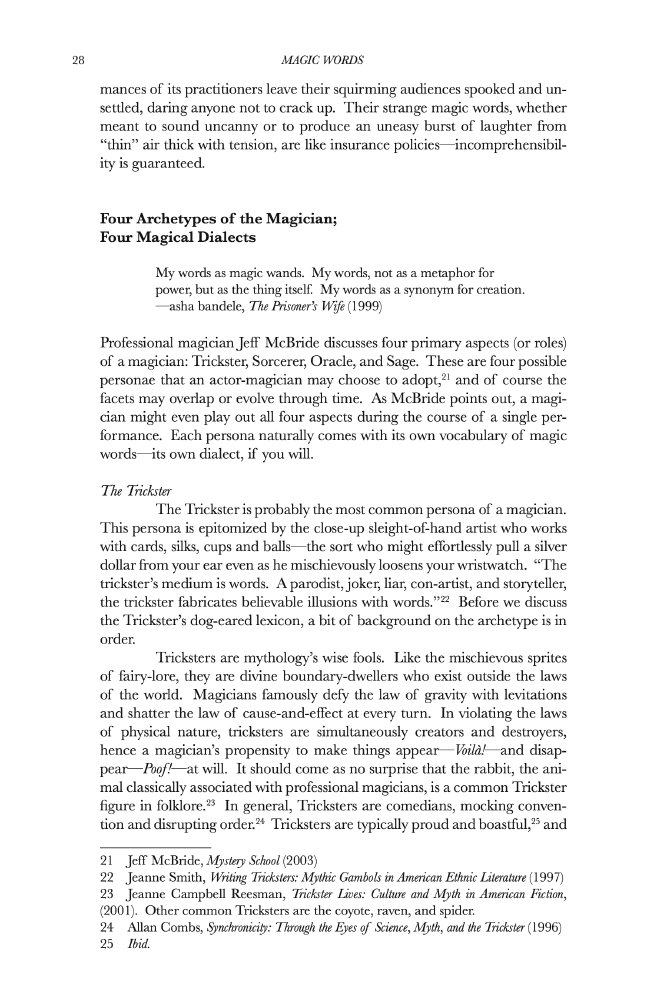
MAGIC WORDS
mances of its practitioners leave their squirming audiences spooked and unsettled,
daring anyone not to crack up. Their strange magic words, whether
meant to sound uncanny or to produce an uneasy burst of laughter from
"thin" air thick with tension, are like insurance policies -- incomprehensibility
is guaranteed.
Four Archetypes of the Magician;
Four Magical Dialects
My words as magic wands. My words, not as a metaphor for
power, but as the thing itself. My words as a synonym for creation.
-- asha bandele, The Prisoner's Wife (1999)
Professional magician Jeff McBride discusses four primary aspects (or roles)
of a magician: Trickster, Sorcerer, Oracle, and Sage. These are four possible
personae that an actor-magician may choose to adopt,21 and of course the
facets may overlap or evolve through time. As McBride points out, a magician
might even play out all four aspects during the course of a single performance.
Each persona naturally comes with its own vocabulary of magic
words -- its own dialect, if you will.
The Trickster
The Trickster is probably the most common persona of a magician.
This persona is epitomized by the close-up sleight-of-hand artist who works
with cards, silks, cups and balls -- the sort who might effortlessly pull a silver
dollar from your ear even as he mischievously loosens your wristwatch. "The
trickster's medium is words. A parodist, joker, liar, con-artist, and storyteller,
the trickster fabricates believable illusions with words." Before we discuss
the Trickster's dog-eared lexicon, a bit of background on the archetype is in
order.
Tricksters are mythology's wise fools. Like the mischievous sprites
of fairy-lore, they are divine boundary-dwellers who exist outside the laws
of the world. Magicians famously defy the law of gravity with levitations
and shatter the law of cause-and-effect at every turn. In violating the laws
of physical nature, tricksters are simultaneously creators and destroyers,
hence a magician's propensity to make things appear -- Voilà! -- and disappear --
Poof! -- at will. It should come as no surprise that the rabbit, the animal
classically associated with professional magicians, is a common Trickster
figure in folklore. In general, Tricksters are comedians, mocking convention
and disrupting order.24 Tricksters are typically proud and boastful, and
21 Jeff McBride, Mystery School (200 )
22 Jeanne Smith, Writing Tricksters: Mythic Gambols in American Ethnic Literature (1997)
2 Jeanne Campbell Reesman, Trickster Lives: Culture and Myth in American Fiction,
(2001). Other common Tricksters are the coyote, raven, and spider.
24 Allan Combs, Synchronicity: Through the Eyes of Science, Myth, and the Trickster (1996)
Ibid.